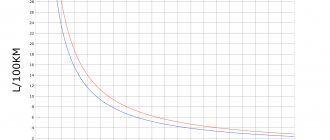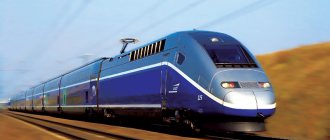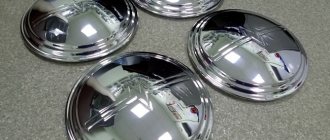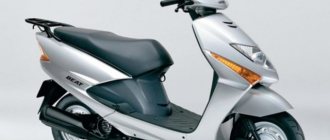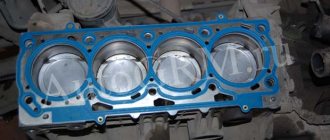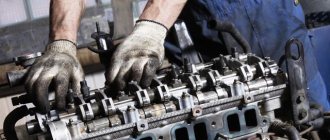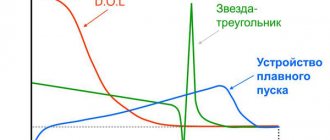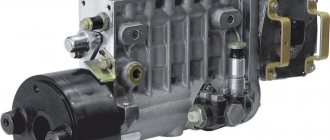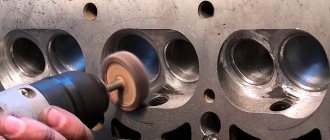As you know, today there are a large number of different types of internal combustion engines. These types of power units are a source of energy for vehicles, mechanisms and units, and also differ in performance, design, purpose, etc.
In our previous articles, we have already looked at all kinds of engines that are installed on cars. Next, we intend to talk about what classification of internal combustion engines exists.
General classification of engines
Let's start with the fact that internal combustion engines are classified according to a number of characteristics and features. First of all, power plants differ in their purpose. ICEs are:
- stationary type;
- engines for transport;
The former are widely used as a drive mechanism for various pumps, generators, etc. The second type can be found on cars, motorcycles, ships, airplanes, trains and other types of air, land and water vehicles. Note that this classification does not affect jet, hydrogen and rocket engines, but applies to mass-produced units.
Also, power plants differ in the type of fuel used. Engines can operate on:
- liquid and light fuel (gasoline, diesel fuel, alcohol);
- liquid heavy fuel (fuel oil, diesel oil, gas oil)
- gas fuel;
- use combined fuel, when the engine simultaneously uses liquid fuel and gas (for example, gas diesel);
- several types of fuel are used at once for a multi-fuel internal combustion engine (the unit runs on both gasoline and kerosene, etc.);
Also, internal combustion engines can be divided according to how the conversion of thermal energy as a result of fuel combustion into mechanical useful work is realized. Engines are:
- piston internal combustion engines (combustion and conversion of thermal energy into mechanical work occurs in the engine cylinder;
- gas turbine engines (in such engines, fuel burns in a special combustion chamber, after which thermal energy is converted into mechanical energy on the turbine wheel blades;
- engines of a combined type, in which fuel is burned in the cylinders of a piston engine, and such an engine is a gas generator. This means that thermal energy is only partially converted into mechanical energy in the cylinder, and also partially converted at the blades of the turbine wheel (for example, a turbopiston engine).
Internal combustion engines also differ in the method of mixture formation. Power units are:
- engines with external mixture formation (the working mixture is not formed in the cylinder). Simply put, these are carburetor gasoline and gas engines, as well as injection engines with fuel injection into the intake manifold.
- installations with internal mixture formation (at the intake stroke, air is supplied separately into the cylinder, then fuel is injected directly into the combustion chamber, and the working mixture is formed in the cylinder itself). Such mixture formation occurs in diesel engines, in gasoline units with a spark ignition system and gas engines, where fuel is supplied to the cylinder before compression begins.
Engines are also classified according to the method of ignition of the working fuel-air mixture. The mixture may be flammable:
- from an external source, which is an electric spark on the spark plug;
- from compression, where the mixture is ignited by high temperatures during strong compression of air and fuel in the cylinder (for example, a diesel internal combustion engine);
- units with prechamber-flare ignition. Such prechamber engines have two combustion chambers. In the first (small) chamber, the mixture is ignited by a spark, then further ignition of the main charge in the main (large) chamber occurs due to the propagation of the flame front from the small chamber.
- engines that operate on the principle of primary supply of a small amount of liquid fuel (self-ignites from compression), as a result of which it is possible to ignite the main charge, which consists of gas fuel (gas-diesel engine).
Let us add that piston engines are also divided according to the method of performing the operating cycle. Motors are 2-stroke and 4-stroke. Power units can be atmospheric (air intake occurs due to vacuum in the cylinders) and supercharged, when air is forced in under pressure.
As for supercharging, engines can be compressed or turbocharged, and can also have both solutions at once. Engines with a turbocharger receive a gas turbine, which operates thanks to the influence of exhaust gases.
Units with a mechanical compressor are structurally equipped with a device that is driven by the engine, taking part of the energy from it. The combined type assumes that the engine simultaneously has both a turbocharger and a mechanical supercharger.
It is also worth mentioning the differences in the method of regulating the supply of fuel to the cylinders when the load changes. There are engines with mixture control according to:
- quality;
- quantity;
- mixed type;
In the first case, we are talking about changing the mixture composition taking into account the loads and operating modes of the internal combustion engine. In the second case, the composition does not change, and only a larger or smaller amount is supplied. In engines with mixed regulation, both the composition of the mixture and the quantity change, which depends on the load on the unit.
It is also necessary to mention the differences between the motors in the cooling method. Engines are available with liquid cooling, air cooling and combined cooling. The lubrication system also deserves special attention. For example, in two-stroke engines the lubricant burns directly in the cylinders, while in four-stroke engines the oil practically does not enter the combustion chamber.
Finally, we note that the classification of automobile engines affects piston internal combustion engines (petrol, diesel and gas), carburetor and injection, with external mixture formation or direct fuel injection, with spark ignition or compression ignition.
Also on some cars you can find gas turbine, pre-chamber or rotary piston engines, but today such units cannot be called mass-produced in relation to the automotive industry.
TO
category:
Car maintenance
P
publication:
Classification, general structure and main engine parameters
H
read more:
General structure and working process of the engine
Classification, general structure and main engine parameters
The engines installed on most vehicles are called internal combustion engines because the process of combustion of fuel, releasing heat and converting it into mechanical work, occurs directly in its cylinders.
These engines are classified: - according to the method of mixture formation - into engines with external mixture formation (carburetor and gas), in which the combustible mixture is prepared outside the cylinders, and engines with internal mixture formation (diesels), in which the working mixture is formed inside the cylinders; – according to the method of performing the working cycle - four- and two-stroke; – according to the number of cylinders - single-, double- and multi-cylinder; – according to the arrangement of the cylinders - for engines with a vertical or inclined arrangement of cylinders in one row and for V-shaped engines with an arrangement of cylinders at an angle (when the cylinders are located at an angle of 180°, the engine is called with opposite cylinders, or opposed); – according to the cooling method - for engines with liquid or air cooling; - by type of fuel used - gasoline (carburetor), diesel, gas and multi-fuel.
Depending on the type of fuel used, the methods for igniting the working mixture in engines are different: - in carburetor engines, a mixture prepared from gasoline vapor and air, and in gas engines, a mixture consisting of compressed or liquefied flammable gas and air is ignited by an electric spark; – in diesel engines, finely atomized diesel fuel injected into the cylinders self-ignites under the influence of high temperature compressed air without an external ignition source; – in multi-fuel engines (ZIL-645), the design of which allows the use of diesel fuel, gasoline and other fuels, ignition of the working mixture occurs in the same way as in diesel engines, from highly heated air due to its high degree of compression.
Promotional offers based on your interests:
Internal combustion engines consist of mechanisms and systems, the general structure and principle of operation of which is discussed using the example of a four-stroke single-cylinder carburetor engine. The main parts of such an engine are the crank and gas distribution mechanisms, as well as power systems, lubrication systems, cooling and ignition systems.
The crank mechanism converts the rectilinear reciprocating movement of the piston into the rotational movement of the crankshaft and consists of a cylinder, a head, which is like a lid covering the cylinder from above, a piston with rings and a pin that connects the piston to the upper head of the connecting rod. The lower head of the connecting rod is connected to the crankshaft, at the rear end of which a flywheel is installed.
Promotional offers:
Read more: General structure and working process of the engine
TO
Category: – Car maintenance
Home → Directory → Articles → Forum
The main design differences of the internal combustion engine
If we talk about the main differences in the design of piston engines, various power units are divided into in-line horizontal and vertical according to the arrangement of the cylinders. Engines are also V-shaped, opposed, etc.
There are also single-piston engines, when one cylinder has one piston and a working cavity. In this case, there are also internal combustion engines in which the pistons move oppositely in one cylinder, and the working cavity is located between the two pistons. There are also double-acting motors, in which there are working cavities on both sides of the piston.
Separately, it is worth mentioning rotary piston engines (Wankel engine), which also have different designs. The most common option is where the rotor, which is the piston, moves (planetary motion) in the housing. During such movement, combustion chambers with variable displacement are formed between the rotor and the walls of the engine housing.
We also recommend reading a separate article about the types and types of internal combustion engines. From this article you will learn about the different types of existing internal combustion engines, as well as their distinctive features.
At the same time, there are variants of a rotary engine, where the piston-rotor does not move, and the planetary motion is performed by the internal combustion engine housing. Another type can be considered units in which both the housing and the rotor itself move.
Basic engine mechanisms and their purpose.
Previous1Next
Classification of tractor engines
Purpose. An engine is a machine that converts any type of energy into mechanical work. All tractors and most modern cars are equipped with thermal piston internal combustion engines (ICE), in which the heat released during the combustion of fuel in the cylinders is converted into mechanical work. Heat engines also include steam engines and turbines, gas turbines and jet engines, but all of them, for various reasons, are not widely used as automotive engines.
Classification. ICEs used on tractors, cars and other self-propelled agricultural machines are classified according to the following criteria (the first three of them are basic, the rest are additional):
according to the method of implementing the working cycle - four- and two-stroke;
according to the method of mixture formation - with external
(gasoline and gas) and
internal
(diesel)
mixture formation;
according to the method of ignition of the working mixture - with forced ignition from an electric spark
(gasoline, gas, etc.) and with
compression ignition,
i.e. with
self-ignition
(diesels);
by purpose - automobile
and
tractor;
by type of fuel used - running on gasoline, heavy diesel fuel
(diesels),
compressed
or
liquefied gas,
as well as other
(alternative)
types of fuel (alcohol, hydrogen, etc.);
by number of cylinders - one
and
multi-cylinder (
two-, three-, four-, five-, six-, eight-cylinder, etc.);
according to the arrangement of the cylinders - single-row
(with the cylinders arranged in one row vertically or with the cylinder axis tilted from the vertical at an angle of 20...40°),
V-shaped double-row
(with the cylinders arranged at an angle) and
opposed
(with the opposite horizontal arrangement of the cylinders, i.e. at an angle of 180 °;
X-
and
star-shaped (
four-, five-, six-cylinder, etc.);
according to the method of filling the cylinders with fresh charge - without supercharging,
i.e. with free intake (filling is carried out due to the pressure difference in the cylinders and the environment that occurs during the movement of the piston) and
with supercharging
(filling occurs under the pressure created by the compressor);
by cooling method - with liquid
and
air cooling.
Basic engine mechanisms and their purpose.
Engine parts. A piston internal combustion engine consists of mechanisms - crank and gas distribution, and systems - cooling, lubrication, power, ignition, starting.
The crank mechanism (CPM) senses gas pressure and converts the rectilinear reciprocating motion of the piston into rotational motion of the crankshaft.
The gas distribution mechanism (GRM) is designed for the timely release of exhaust gases and the admission of a combustible mixture (carburetor and gas engines) or air (diesels) into the cylinder.
The power supply system serves to supply fuel and air to the engine cylinders. The cooling system provides the required thermal conditions of the engine. The lubrication system supplies lubricant to the rubbing surfaces to reduce friction, reduce wear and remove heat from the contacting surfaces. The ignition system ensures ignition of the working mixture in carburetor engines, with gasoline injection and gas engines. The starting system is used to rotate the engine crankshaft when starting it.
The operating principle of diesel and carburetor engines, basic concepts and definitions
Operation of a four-cylinder in-line engine. To determine the angle through which strokes of the same name will be repeated in the cylinders (for example, strokes of the power stroke), it is necessary to divide 720° by the number of cylinders. In a four-cylinder engine, these strokes are shifted by an angle of 720°/4 = 180° of crankshaft rotation. For every two revolutions of the crankshaft in a four-stroke four-cylinder engine, four strokes of power stroke, exhaust, etc. occur.
Since the alternation of strokes of the same name occurs through 180° rotation of the crankshaft, the connecting rod journals of the shaft are located at an angle of 180° to one another, i.e., they are in the same plane.
The firing order of four-cylinder, four-stroke engines can be 1-3-4-2 (most common) or 1-2-4-3.
Let us consider the sequence of alternating strokes in the cylinders of such an engine (Table 1). When the engine operating order is 1-3-4-2, during the first half of the first revolution of the crankshaft (0...180°) the power stroke occurs in the first cylinder, during its second half (180...360°) - in the third cylinder, during the first half of the second revolution (360...540°) - in the fourth cylinder and for the second half of the second revolution (540...720°) - in the second cylinder. Other measures are also shifted.
Table 1 Alternation of strokes in a four-cylinder in-line
Engine
(working order 1—3—4—2)
| Crankshaft revolution | Crankshaft rotation angle, degrees | Cylinders | |||
| 1st | 0…180 | RH | Vol. | Szh. | Vp. |
| 180…360 | Vol. | Vp. | RH | Szh. | |
| 2nd | 360…540 | Vp. | Szh. | Vol. | RH |
| 540…720 | Szh. | RH | Vp. | Vol. |
Basic concepts and definitions. The main parameters of the engine are the cylinder diameter, piston stroke, number of cylinders, combustion chamber volume, total and working volumes of the cylinders, compression ratio.
With one revolution of the crank / (Fig. 3.1) the piston 3
makes one move down and up. A change in the direction of movement of the piston in the cylinder occurs at two extreme points, called dead points: the extreme upper position is the top dead center (TDC), the extreme lower position is the bottom dead center (BDC).
The distance from TDC to BDC is called the piston stroke and is designated by the letter S: S = 2r.
When the piston moves from one dead center to another, the crank rotates through an angle of 180°, i.e. makes half a revolution.
The space above the bottom of the piston when it is at TDC is called the combustion chamber. Its volume is denoted by Vc.
The space of the cylinder between the two dead points (BDC and TDC) is called the displacement volume and is designated
Vh.
Sum of combustion chamber volume
Vc
and working volume
cylinder is the total volume of the cylinder, which is denoted by
Cylinder displacement, cm3 or l,
where D
— cylinder diameter, cm or dm.
The sum of all the working volumes of the cylinders of a multi-cylinder engine is called the engine displacement, or displacement:
where is the number of cylinders.
The ratio of the total volume of the cylinder to the volume of the combustion chamber is called the compression ratio:
The compression ratio is a dimensionless quantity. It shows how many times the volume of working mixture or air entering the cylinder decreases when the piston moves from BDC to TDC. The higher the compression ratio, the greater the pressure and temperature of the working mixture at the end of compression, i.e. at TDC.
As the compression ratio increases, engine power and fuel efficiency increase. However, increasing the compression ratio in both carburetor engines and diesel engines is possible only to certain limits. Different types of liquid and gaseous fuels have different auto-ignition temperatures, so the type of fuel the engine runs on and its starting properties determine the limits of the compression ratio. Engines running on gasoline with spark ignition have a compression ratio in the range of 4...12 (7...9), on gas - 5...12 (8...10), and diesel engines - 14...26 (15...19). The most commonly used values are given in parentheses.
Previous1Next
Date added: 2017-01-16; views: 4751; ORDER A WORK WRITING
